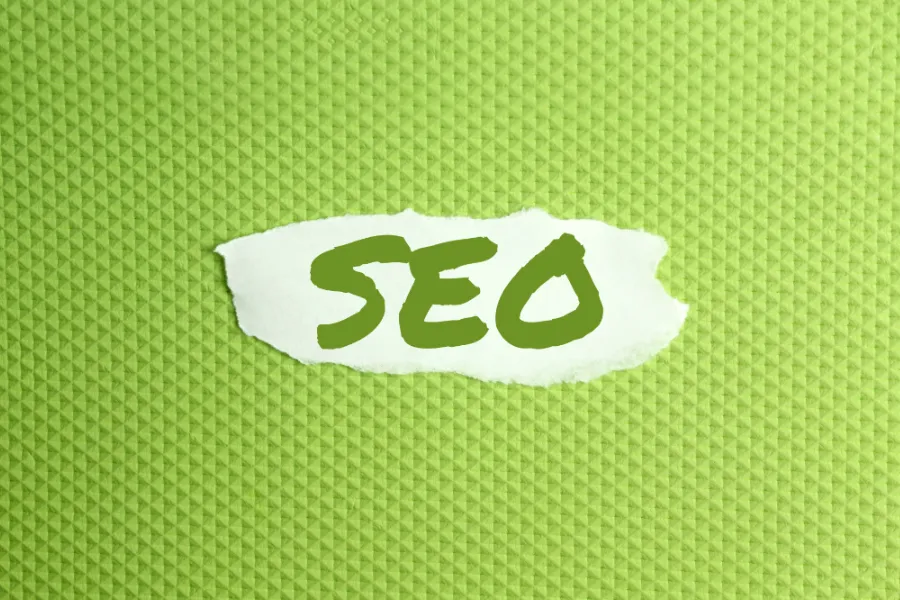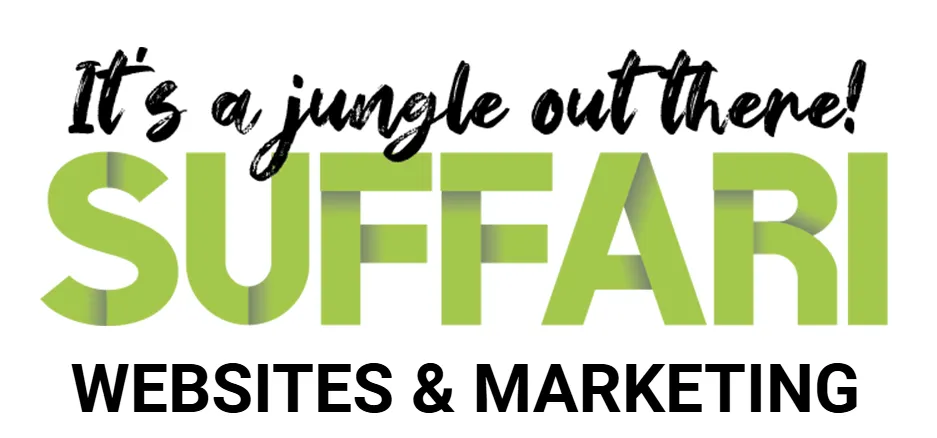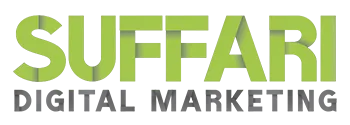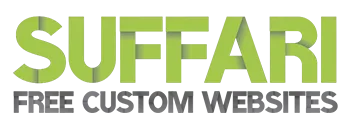
What is an Anchor Text? - Suffari
Anchor text is the visible, clickable text in a hyperlink that users see on a webpage. It provides context about the linked page and helps both users and search engines understand what the target content is about. Proper use of anchor text can improve SEO and user experience by clearly indicating the destination of the link.
Table of Contents
What is an Anchor Text? - Suffari
What exactly is an Anchor Text?
Role of Anchor Text in Hyperlinks
Importance of Anchor Text in SEO
Improving Search Engine Rankings
Best Practices for Using Anchor Text
Broken Links and Misleading Text
Are there different types of Anchor Texts?
What exactly is an Anchor Text?
An anchor text is the visible, clickable word, or group of words, in a hyperlink that guides users to another webpage or resource. Understanding anchor text is essential for both web navigation and search engine optimization, as it helps convey the context and relevance of the linked content. Proper use of anchor text can improve user experience and enhance a website’s search rankings.
Definition of Anchor Text
Anchor text refers to the visible, clickable text in a hyperlink that users see on a webpage. It serves as a description or label for the linked content, guiding visitors on what to expect when they click on it. Proper use of anchor text enhances user experience and can also improve search engine optimization by indicating the relevance and context of the linked page.
Role of Anchor Text in Hyperlinks
Anchor text is the visible, clickable text in a hyperlink that users see on a webpage. It plays a crucial role in helping visitors understand what kind of content they can expect when they click the link. Properly chosen anchor text provides context and improves the user experience by guiding them to related or relevant information.
The role of anchor text in hyperlinks is vital for both usability and SEO. It informs search engines about the content of the linked page, influencing how that page ranks in search results. Clear, descriptive anchor text also enhances accessibility by making it easier for screen readers to interpret links, thereby supporting users with visual impairments.

Types of Anchor Text
Understanding the different types of anchor text is essential for effective SEO and user experience. Various forms of anchor text serve distinct purposes, from guiding users to relevant content to signaling the importance of linked pages to search engines. They play a crucial role in SEO by helping search engines understand the content and relevance of the linked page. There are various types of anchor text, each serving different purposes in linking strategies.
There are several types of anchor texts used both in internal links and within backlinks. Exact match anchor text for example, refers to when the clickable text precisely matches the target keyword or phrase that the link is intended to rank for. Partial match anchor text contains related keywords or phrases, providing context without full matching. Other common types include branded anchors, which use the brand name; generic anchors, such as "click here" or "read more"; and partial match anchors, which incorporate variations of the target keywords. Each type plays a unique role in building a natural and diverse backlink profile. Types of anchor text include:
Exact Match
Exact match anchor text uses the target keyword or phrase exactly as it appears on the destination page. This type can boost rankings for specific keywords but should be used sparingly to avoid penalties. It is powerful for signaling relevance to search engines but should be used judiciously to avoid potential penalties for over-optimization.
Partial Match
Partial match anchor text refers to a type of anchor text used in hyperlinking where the clickable text includes a keyword or phrase related to the target page but is not an exact match. It includes variations, or partial matches, of the target keyword, providing a more natural link profile. This strategy helps improve search engine optimization by making links appear more natural and relevant.
Long-tail Anchor Text
Long-tail anchor text refers to longer, more descriptive phrases used as anchor text. These are highly specific and usually target niche keywords or detailed search queries. Long-tail anchor texts tend to attract targeted traffic and improve relevance for particular searches. They are also less competitive than short, broad keywords, making them an effective strategy for ranking higher in search engine results while providing valuable context to both users and search engines.
Branded Anchor Text
Branded anchor text uses the name of a brand or website, helping build brand recognition and authority.
Generic Anchor Text
These are non-descriptive phrases such as "click here," "read more," or "website," which do not specify the content of the linked page.
Image Anchor Text
Anchor text refers to the clickable text in a hyperlink that guides users and search engines to another webpage. There are various types of anchor text used for different purposes.
Image anchor text occurs when an image is used as a hyperlink; search engines interpret the alt text of the image as the anchor text, making it an important element for SEO.
Generic Anchor Text
Generic anchor text includes words like "click here" or "read more," which are neutral and user-friendly but less descriptive for SEO. Adding some of these sparingly into your backlink strategy further helps your backlinks look more natural. On most websites, you will naturally get generic anchor text internal links from buttons so there's no need to purposely add those to your website.
Naked URLs (no anchor text)
Naked URL anchor text displays the URL as the clickable link, essentially with no words in the anchor text, like "https://suffari.com," providing clear indication of the destination.

Importance of Anchor Text in SEO
Anchor text plays a crucial role in SEO by helping search engines understand the context and relevance of linked pages. Properly optimized anchor text can boost a website's ranking, improve user experience, and increase click-through rates. It acts as a guide for both users and search engines, highlighting the relationship between linked content and the anchor text used.
Improving Search Engine Rankings
Anchor text is the clickable text in a hyperlink that guides users to another webpage or resource. It plays a vital role in SEO because search engines use anchor text to understand the context and relevance of the linked page. Properly optimized anchor text helps improve search engine rankings by signaling the topic of the destination page, making it easier for search engines to index and rank the content accordingly.
Enhancing User Experience
Anchor text plays a crucial role in SEO by providing both search engines and users with contextual information about the linked page. Well-crafted anchor text helps search engines understand the relevance and topic of the linked content, improving the chances of higher rankings for targeted keywords. Additionally, descriptive anchor text enhances user experience by clearly indicating where the link will lead, making navigation intuitive and efficient. When users find links that are relevant and informative, they are more likely to click, stay engaged, and trust the website. Overall, effective anchor text contributes significantly to a site’s SEO performance and creates a seamless browsing experience for visitors.
Distributing Page Authority
Anchor text plays a crucial role in SEO as it provides context to both users and search engines about the content of the linked page. Well-crafted anchor texts help improve the relevance and ranking of the target pages by signaling the keywords and topics associated with them.
Distributing page authority effectively through internal linking using descriptive anchor texts can enhance the overall SEO performance of a website. Proper distribution ensures that important pages receive sufficient link equity, boosting their visibility in search engine results.

Best Practices for Using Anchor Text
Anchor text plays a vital role in effective web navigation and search engine optimization. Understanding the best practices for using anchor text can significantly enhance a website's usability and visibility. Properly crafted anchor text helps both users and search engines understand the context of linked content, ensuring a more seamless browsing experience and improved ranking potential.
Relevance and Context
Anchor text is a crucial element in web content that helps both users and search engines understand the context of linked pages. To maximize its effectiveness, it is important to use relevant and descriptive anchor text that accurately reflects the content of the destination page. Avoid generic phrases like "click here" and instead opt for specific keywords that enhance SEO and provide clarity. Additionally, ensuring that the anchor text fits naturally within the surrounding content maintains readability and user trust. Using varied yet targeted anchor text across your site can improve overall link equity and search engine rankings, making relevance and context vital components of best practices in linking strategies.
Avoiding Over-Optimization
Anchor text plays a crucial role in SEO by providing both users and search engines with context about the linked page. To use anchor text effectively, it is important to choose descriptive and relevant words that accurately reflect the content of the target page. Avoid generic phrases like "click here" and instead incorporate keywords naturally to enhance relevance.
However, it is equally important to avoid over-optimization, which can be penalized by search engines. This means not stuffing keywords excessively into your anchor text or using identical anchor texts repeatedly across multiple links. Instead, maintain a balanced variety of anchor text types, including branded, exact match, partial match, and generic phrases, to create a natural link profile. Consistent and strategic use of anchor text helps improve search rankings without raising red flags for over-optimization.
Using Descriptive Text
Anchor text plays a crucial role in both user experience and search engine optimization by providing context about the linked page. Using descriptive anchor text helps users understand where they will be directed and improves the relevance of your links for search engines. It is best to avoid generic phrases like "click here" and instead use specific, meaningful words that clearly describe the content of the destination page. Incorporating relevant keywords naturally within your anchor text can also boost your site's SEO. Additionally, maintaining consistency in your anchor text style and ensuring it remains relevant to the linked content enhances overall site credibility and navigability.
Balancing Different Types
Anchor text plays a crucial role in guiding both users and search engines through your website's content. To optimize its effectiveness, it is important to use relevant and descriptive anchor text that accurately reflects the linked page's content. Balancing different types of anchor text, such as branded, generic, exact match, and partial match, helps create a natural linking profile and avoids penalties for over-optimization. Incorporating varied anchor text also enhances user experience by providing context and maintaining diversity in your internal and external links. Ultimately, strategic use of anchor text supports SEO efforts and improves overall site navigation.

Common Mistakes to Avoid
Understanding the concept of anchor text is essential for effective web communication and SEO practices. However, many users make common mistakes when using anchor text that can impact readability and search engine rankings. In this article, we will explore these mistakes and provide tips on how to avoid them to enhance your website’s performance and user experience.
Keyword Stuffing
When it comes to using anchor text effectively, one common mistake to avoid is keyword stuffing. Overloading your anchor texts with too many keywords can make your content appear spammy and reduce its readability. Additionally, excessive use of exact match keywords in anchor texts might trigger search engine penalties. Instead, focus on creating natural and descriptive anchor texts that accurately reflect the linked page's content. This approach not only improves user experience but also enhances your SEO efforts by maintaining a balanced and authentic linking strategy.
Irrelevant Anchor Text
One common mistake to avoid when using anchor text is choosing irrelevant or generic phrases that do not accurately describe the linked content. This can confuse users and diminish the effectiveness of your SEO efforts. Using descriptive, keyword-rich anchor text helps both search engines understand the context of the link and improves your website's ranking. Additionally, overusing exact match keywords as anchor text can appear spammy and may lead to penalties. Instead, aim for a natural variety of anchor text types, including branded, generic, and descriptive options, ensuring that each link provides value and clarity to the user.
Broken Links and Misleading Text
When using anchor text, it is important to be aware of common mistakes that can negatively impact your website's SEO and user experience. Avoid broken links and misleading text to ensure clarity and trustworthiness for your visitors.
Using generic or vague anchor text like "click here" instead of descriptive words that indicate the linked content.
Including broken links that lead to 404 error pages, which frustrate users and harm your site's credibility.
Misleading anchor text that does not accurately reflect the destination page, causing confusion or disappointment.
Overusing exact match keywords as anchor text, which can be perceived as spammy by search engines.
Failing to update or remove outdated links, leaving visitors with dead ends.
By paying attention to these issues, you can improve the effectiveness of your anchor texts, enhance user experience, and boost your search engine rankings.

Frequently Asked Questions
Are there different types of Anchor Texts?
There are several types of anchor text commonly used. Exact match anchor text contains the exact keyword or phrase related to the target page. Partial match anchor text includes variations or partial keywords. Branded anchor text uses the name of a brand or company. Generic anchor text employs generic phrases like "click here" or "read more." Naked URL anchor text simply displays the full URL of the link. Finally, LSI (Latent Semantic Indexing) anchor text incorporates related keywords or synonyms to provide contextual relevance.
What is the best type of anchor text for SEO?
The best type is exact match. However, you want to use this only a few times and make sure you're using an exact match anchor text from a high-traffic, high authority website to provide the best SEO results. Overuse of exact match anchor text in backlinks does not look natural and can cause Google to penalize you. Basically, mix it up, use synonyms and variations of your main keywords for anchor texts when backlinking for best results.
Summary of Anchor Texts
An anchor text is the visible, clickable text in a hyperlink that users see on a webpage. It guides visitors to other pages or resources and plays a crucial role in website navigation and SEO strategies.
It helps users understand what to expect when they click the link.
Anchor texts contribute to search engine optimization by indicating the relevance of the linked page.
Effective use of descriptive anchor text can improve a website’s ranking for targeted keywords.
Overusing generic phrases like "click here" can diminish SEO value and user experience.
Properly optimized anchor texts create a better navigation flow and enhance site usability.
Need help with SEO?
SEO is always at the forefront of Suffari’s services. Included in any of our affordable monthly website management plans includes onsite SEO. Plus, we offer customized offsite SEO backlink solutions at thousands less than most marketing agencies or SEO firms. Sign up today for a free website audit and SEO consultation. It will be the best decision you’ve ever made for your business. We look forward to working with you!
























Youtube